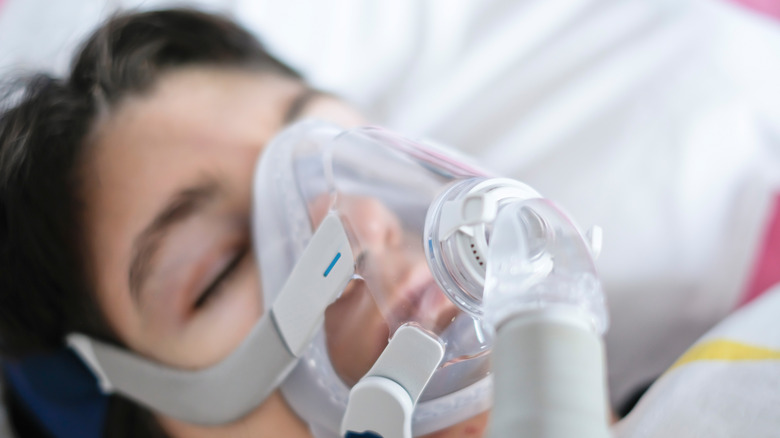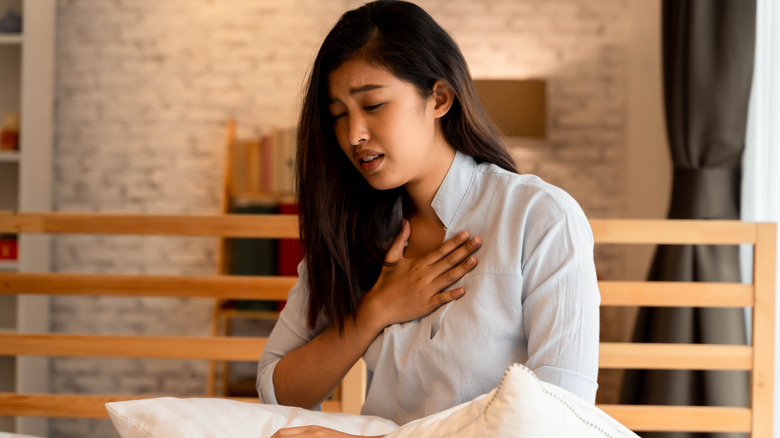How A BiPAP Machine Really Works
If you have certain problems with breathing, according to Johns Hopkins Medicine, you might need bilevel positive airway pressure (BiPAP or BPAP) therapy. BiPAP therapy is often prescribed to people with obstructive sleep apnea, a disorder in which the throat collapses and blocks a person's airway causing them to periodically stop breathing during sleep. It might also be used for asthma, chronic obstructive pulmonary disease (COPD), congestive heart failure, coronary artery disease, obesity hypoventilation syndrome, or other causes of breathing difficulties.
Healthline notes that BiPAP is a type of ventilation therapy that can be used in hospitals or at home. Machines have a tube connected to a mask that is worn over the mouth and nose. BiPAP machines are designed to push air into the lungs using pressure in order to assist breathing. This helps get more oxygen into the body's tissues.
If you are a candidate for a BiPAP machine, you will need to consult with a respiratory therapist to adjust the machine settings according to your personal needs. A BiPAP machine has two levels of pressure that must be adjusted: one for when you inhale and one for when you exhale.
How a BiPAP machine helps breathing
WebMD explains that normally when you inhale, a muscle in your chest called the diaphragm moves downward. This makes the pressure in your lungs drop, which causes air to be sucked into your lungs. Certain medical conditions, however, make it difficult for this to happen. Positive airway pressure machines counteract this by using a machine to mechanically pump air under pressure into a person's airway, according to MedlinePlus.
The Community for Sleep-Care Professionals further explains that BiPAP machines have two pressure settings: a higher-pressure one for inhalation and a lower-pressure one for exhalation. The higher pressure setting helps keep your airway open when you are breathing in, allowing you to breathe better. The lower pressure setting also helps to keep the airway open but allows for a more comfortable exhalation, as you are not breathing against as much pressure. Healthline states that BiPAP therapy may be the preferred therapy for people who have difficulty with exhaling, such as those with COPD.


